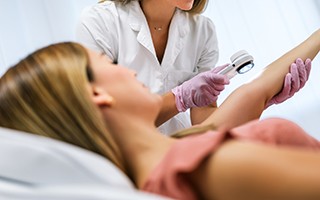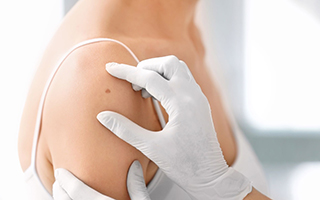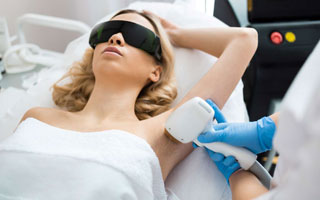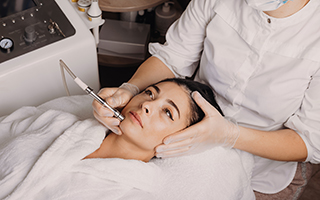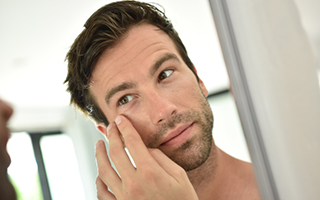Pityriasis Rosea
Manage Itching Skin Rashes for Bryn Mawr, Newtown Square, Philadelphia, and the Main Line
- Home
- Medical Dermatology
- DERMATOLOGY CONDITIONS
- Pityriasis Rosea
An itchy rash on your skin that starts off with a circular or oval spot on the torso area could be caused by a skin condition known as pityriasis rosea. Bryn Mawr Skin & Cancer Institute dermatologists help patients identify and treat this common dermatological condition. Though it is not painful and isn’t contagious, pityriasis rosea can be unsightly, itchy, and uncomfortable.
Bryn Mawr Skin & Cancer Institute can help you find relief for symptoms of pityriasis rosea. To schedule an appointment, Please BOOK ONLINE, call 610.525.5028, or Contact Us.
What Causes Pityriasis Rosea?
The underlying cause of pityriasis rosea has not been definitively determined. Recent studies have suggested that pityriasis rosea is linked to a viral infection with certain types of the herpes virus.
What Are the Signs and Symptoms of Pityriasis Rosea?
The most common areas for pityriasis rosea to occur include the torso, upper arms, thighs, and neck. The earliest sign of pityriasis rosea is a single, large, slightly raised, scaly patch on the back or torso, which is referred to as a “herald patch” or “mother patch.” This herald patch is pink or red in color with an oval shape that is anywhere from 2 to 10 cm in size. It usually appears several days or even weeks before the widespread rash.
Prior to this, some patients may also have other symptoms that are unrelated to the skin, such as headache, fatigue, joint pain, fever, and a sore throat. A rash then appears on the abdomen, upper thighs, neck, and upper arms. The pityriasis rosea rash consists of several small, raised, scaly spots that sweep out from the middle of your back in a shape that resembles drooping pine-tree branches (Christmas tree pattern). On light skin, the pityriasis rosea patches may have a pinkish-red color, but they often look gray, dark brown, or black on darker skin. Itching may be mild to severe.
Who Gets Pityriasis Rosea?
Pityriasis rosea is seen most frequently in older children and young adults between the ages of 10 to 35, but anyone can have this condition.
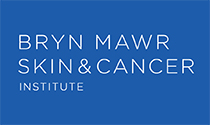
Meet Our Dermatologists &
Certified Physician Assistants
Our board-certified dermatologists & PA-Cs are dedicated to detecting and treating skin cancers. We treat the full spectrum of skin diseases. Our Mohs and Plastic Surgery practices are integrated, and offer patients the most advanced skin cancer treatment, delivering superior outcomes.
Treatment Options for Pityriasis Rosea
Signs and symptoms of pityriasis rosea typically disappear on their own within 10 to 12 weeks and the skin returns to its normal color. However, many patients seek professional treatments for the rash caused by pityriasis rosea. It’s relatively easy to manage the symptoms of pityriasis rosea. There are several treatment options available, including over-the-counter topical products, prescription medications, and light therapy.
Emollient creams are hydrating, skin-soothing treatments that provide a protective film to hold moisture in, which makes them helpful for skin conditions that are itchy and scaly like pityriasis rosea. Prescribed steroid creams, ointments, and antihistamines can also provide relief for symptoms by reducing the itching. Patients may have some darker areas of skin for several months after the rash heals, but pityriasis rosea does not leave persistent marks.
Learn how to manage signs and symptoms of pityriasis rosea from the Bryn Mawr Skin & Cancer Institute. To schedule an appointment near Bryn Mawr, Newtown Square and Philadelphia, Please BOOK ONLINE, call 610.525.5028, or Contact Us.




